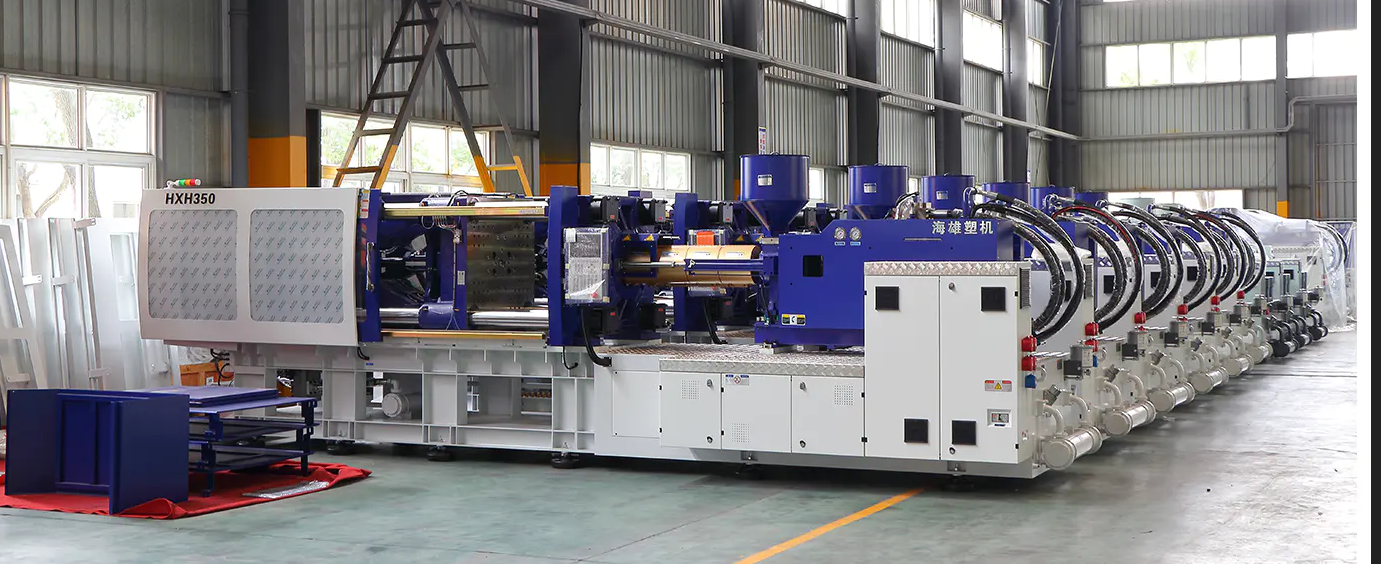Content
1. Working principle of two-color injection molding machine
- Double barrel design Equipped with two independent injection units (barrel A and barrel B), plastics of different colors or materials (such as ABS+TPE, hard rubber+soft rubber) can be injected separately.
- Rotary mold or turntable technology
Rotary mold type: The movable mold part of the mold can rotate 180°, and the injection of two materials can be completed in one mold closing.
Turntable type: The semi-finished product is transferred to the second station for secondary injection molding through the rotating workbench.
- Integrated molding The two materials are layered or nested in the mold, without the need for subsequent assembly, reducing secondary processing.
2. Key ways to improve production efficiency
Reduce production processes
The traditional method requires the production of two parts separately and then assembles them, while the two-color injection molding machine is molded in one step, saving assembly, bonding or welding steps.
Shorten cycle time
By optimizing mold design and synchronous injection action, the cycle time is shortened by 30%-50% compared with the production of two colors/materials separately.
High degree of automation
Integrated manipulator or turntable system, automatically completes the removal, mold change and secondary injection molding, reducing manual intervention.
Reduce defective rate
Avoid the alignment deviation or weak bonding problems in traditional assembly, and the product consistency is higher.
Save energy and cost
A single device replaces multiple traditional injection molding machines, reducing space and energy consumption.
Advantages compared with traditional injection molding
|
Comparison items |
Traditional single-color injection molding + assembly |
Two-color injection molding machine |
|
Production process |
Multiple processes, multiple equipment |
Integrated molding |
|
Cycle time |
Long (needs two molding + assembly) |
Shortened by more than 30% |
|
Labor cost |
High (needs assembly personnel) |
Low (fully automated) |
|
Product accuracy |
Assembly errors are prone to occur |
Seamless combination, high accuracy |
3.Common problems and solutions of two-color injection molding machines
Material bonding problem
- Delamination/weak bonding
Reason:
Material incompatibility (such as PP and ABS are incompatible)
Mold temperature is too low or the temperature difference is too large
The second shot is performed only after the first shot material is completely solidified
Solution:
Choose a material combination with good compatibility (such as PP+TPE, ABS+PC)
Increase mold temperature (usually the second shot mold temperature is 10~20℃ higher than the first shot)
Shorten the interval between two injections (control within 5~10 seconds)
- Obvious bonding line
Reason:
Injection speed is too slow, the temperature of the melt front drops
Poor exhaust leads to trapped air
Solution:
Increase the injection speed of the second shot (about 80%~90% of the first shot)
Add exhaust grooves or vacuum exhaust systems at the joint
Appearance defects
- Color mixing (material color mixing)
Reason:
The previous material remains in the nozzle or barrel
Incomplete machine cleaning
Solution:
Use high melting point transition material (such as PC) to clean the barrel
Use double nozzle independent closing design to avoid cross contamination
- Flash/burr
Reason:
Insufficient clamping force (two-color machine needs 15%~20% higher than single-color machine)
Mold wear or uneven parting surface
Solution:
Increase clamping force or reduce injection pressure
Repair mold parting surface and check guide pin guidance accuracy
Dimensional accuracy problem
- Product deformation
Reason:
The shrinkage rate of the two materials is too different (such as ABS shrinkage rate 0.5%, PP shrinkage rate 1.5%)
Uneven cooling
Solution:
Select materials with similar shrinkage rates
Optimize cooling water circuit design and extend holding time
- Dimensional instability
Reason:
Injection molding process parameter fluctuation (temperature, pressure)
Uneven mold thermal expansion
Solution:
Use closed-loop control system to stabilize process parameters
Add constant temperature oil circuit to the mold to control temperature
Equipment and mold problems
- Inaccurate positioning of turntable/rotating mold
Reason:
Servo motor encoder failure
Mold bearing wear
Solution:
Recalibrate the turntable zero position
Replace high-precision bearings
- Insufficient injection volume
Reason:
Barrel or nozzle blockage
Screw wear causes plasticizing capacity to decrease
Solution:
Clean the nozzle and filter
Check the gap between the screw and the barrel (replace if wear exceeds 0.2mm)
Production efficiency issues
- Too long cycle time
Reason:
Unreasonable cooling time setting
Mold movement is not synchronized
Solution:
Use conformal cooling water circuit to shorten cooling time
Optimize hydraulic/electric system action sequence
- Failure of automatic removal
Reason:
Deviation in the gripping position of the robot
Product sticking to the mold
Solution:
Adjust the robot program or increase visual positioning
Add release agent to the mold surface or improve the ejection system

 ENG
ENG  English
English русский
русский Español
Español Português
Português عربى
عربى















 +86-188 6861 6288
+86-188 6861 6288 haixiong@highsun-machinery.com
haixiong@highsun-machinery.com No.36 Yongjiang South Road, Beilun District. Ningbo City, 315800, China
No.36 Yongjiang South Road, Beilun District. Ningbo City, 315800, China